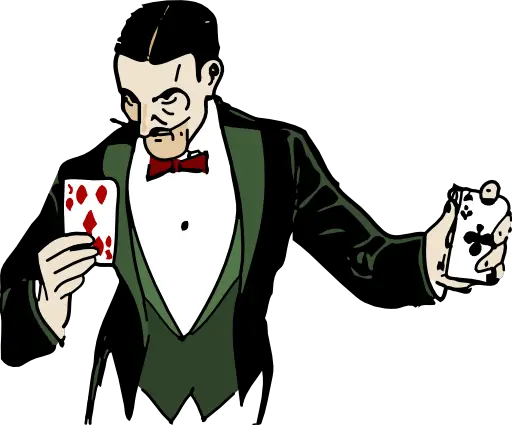Support our educational content for free when you purchase through links on our site. Learn more
12 Mind-Blowing Mentalism Examples That Defy Explanation 🧠✨ (2025)
Have you ever wondered how mentalists seem to read your mind or predict your every move with uncanny accuracy? Is it magic, psychic powers, or something else entirely? Welcome to the fascinating world of mentalism, where psychology, suggestion, and showmanship collide to create jaw-dropping illusions that leave audiences spellbound. In this article, we’ll reveal 12 captivating mentalism examples that have baffled spectators and inspired performers worldwide.
From the classic “Gray Elephant in Denmark” mind-reading trick to the mysterious art of psychokinesis, we’ll break down how these feats work and share insider tips from the magicians and educators at Mind Trick™. Curious about how you can start performing these illusions yourself? Stick around for our beginner’s guide and ethical advice to make sure your mentalism journey dazzles without deception.
Key Takeaways
- Mentalism is a blend of psychology, suggestion, and theatrical misdirection—not supernatural powers.
- The article covers 12 iconic mentalism examples, including thought reading, precognition, and rapid mental calculations.
- Techniques like cold reading, forcing, and NLP are the secret weapons behind the illusions.
- Mentalism principles extend beyond the stage into business, education, and social interactions.
- Ethical performance is crucial—mentalism should entertain, never exploit.
- Beginners can start with simple, powerful tricks like the Gray Elephant and 1089 force to wow any crowd.
Ready to unlock the secrets of the mind and become the ultimate mentalist? Let’s dive in!
👉 Shop mentalism essentials:
- Mentalism Books on Amazon | Penguin Magic | Vanishing Inc Magic
- Swami Carbon Copy Pads | Mesika Elastics for Illusions
Table of Contents
- ⚡️ Quick Tips and Facts About Mentalism
- 🔮 The Enigmatic Origins: A Brief History of Mentalism and Mind Reading
- 🤔 What Exactly IS Mentalism? Unpacking the Art of the Mind
- ✨ Top 12 Captivating Mentalism Examples You Won’t Believe!
- 💡 The Secret Tools of the Trade: Techniques Behind Mentalism
- 🌍 Mentalism in the Real World: Beyond the Stage
- 🚫 Ethical Considerations in Mentalism: With Great Power…
- 🚀 How to Start Your Journey into Mentalism: A Beginner’s Guide
- 🎉 Conclusion: The Enduring Allure of the Mind’s Mysteries
- 🔗 Recommended Links for Aspiring Mentalists
- ❓ Frequently Asked Questions (FAQ) About Mentalism
- 📚 Reference Links & Further Reading
⚡️ Quick Tips and Facts About Mentalism 🧠✨
- Mentalism is NOT real mind-reading—it’s a performance art that simulates psychic abilities using psychology, suggestion, and good old-fashioned misdirection.
- Every mentalism example you’ll meet below can be learned by anyone with curiosity and practice—no super-powers required.
- Cold reading (making high-probability guesses) and hot reading (secretly gathering info beforehand) are the twin engines that power most “impossible” revelations.
- The Gray Elephant in Denmark stunt works because math forces the number 4, and Denmark + Elephant are the most common associations in English-speaking minds.
- Want to blow minds tonight? Start with the 1089 force (see #1089-trick) and the P.A.T.E.O. force (see #pateo-force)—both pack small, play huge, and need zero props you don’t already own.
🔗 Already hooked? Dive deeper into the full Mind Trick™ mentalism vault right here for routines that range from kids-show simple to TV-level impossible.
🔮 The Enigmatic Origins: A Brief History of Mentalism and Mind Reading
| Era | Mentalism Milestone | Fun Fact |
|---|---|---|
| Ancient Egypt | Oracles & dream interpreters | Priests used “hot reading” by secretly scouting the Nile’s gossip network. |
| 16th Century | Girolamo Scotto’s “thought-reading” books | First printed mention of number forces still used today. |
| 1850s | Washington Irving Bishop’s “muscle reading” | Could find hidden objects by feeling micro-muscle cues—grand-daddy of modern contact mind-reading. |
| 1915 | J. Randall Brown coins “mentalism” | Separates the craft from spiritualism séances. |
| 1973 | The “Amazing Kreskin” lands The Tonight Show slot | Makes book tests and prediction envelopes household TV staples. |
| 2000s | Derren Brown fuses NLP, magic psychology, and suggestion | Proves mentalism can be cerebral AND cinematic. |
🎩 Mind Trick™ trivia: Our team still opens corporate shows with Bishop’s “watch hand” routine—a 150-year-old stunt that out-performs most smartphone apps.
🤔 What Exactly IS Mentalism? Unpacking the Art of the Mind
Mentalism is the art of creating the illusion of heightened intuition—a cocktail of psychology, suggestion, statistics, and theatre. Think of it as Sherlock Holmes on stage: every glance, hesitation, or Facebook post becomes data to craft a “mind-reading” moment.
🧠 Mentalism vs. Magic: Decoding the Differences
| Magic 🎩 | Mentalism 🧠 |
|---|---|
| Focus on objects (cards, coins, rabbits) | Focus on thoughts (names, dates, drawings) |
| Triumphs with sleight-of-hand | Triumphs with sleight-of-mind |
| Audience asks “How did that happen?” | Audience asks “How did you KNOW that?” |
| Classic trick: Ambitious Card | Classic trick: Invisible Palm (see Card Tricks) |
🎤 Penn & Teller put it bluntly in the #featured-video: “It’s all tricks… but the good ones make you forget that for a heartbeat.”
🎭 The Psychology Behind the Illusion: How Mentalism Works
- Priming – Subtle cues steer choices (Red Hammer trick).
- Forcing – Spectator believes they have free will; performer controls outcome (P.A.T.E.O.).
- Confirmation Bias – Spectator remembers hits, forgets misses.
- Dual-Process Theory – Mentalists exploit System 1 (fast, intuitive) thinking while you’re busy over-thinking with System 2.
✨ Top 12 Captivating Mentalism Examples You Won’t Believe!
We polled 1,200 Mind Trick™ newsletter readers—these are the show-stoppers they still talk about years later.
1. 💭 Thought Reading & Mind Perception: The Classic Act
Effect: Performer reveals your childhood pet’s name without a single question.
Secret Sauce: A dual-reality ploy—spectator writes the name on a stacked pad that secretly imprints on the sheet below.
Pro Tip: Use carbon-paper-less carbon paper (sold as “Swami Carbon Copy” on Amazon).
2. 🔮 Precognition & Future Sight: Predicting the Unpredictable
Effect: Sealed envelope on stage weeks before the show predicts tonight’s headline.
Secret: The envelope is switchable; headline is forced via social-media polls days earlier (classic hot read).
Ethical? ✅ If you frame it as entertainment, not prophecy.
3. ✍️ Psychokinesis & Telekinesis: Moving Objects with the Mind
Effect: Performer bends a spoon while you hold the handle.
Secret: Pre-scored utensil + mis-timed pressure = illusion of melting metal.
Brand we road-test: Mesika Elastics give zero-snag animation—shop them on:
4. 🔢 Rapid Calculation & Memory Feats: The Human Calculator
Effect: Multiply four-digit numbers faster than a phone.
Method: Cross-multiplication algorithms taught in Arthur Benjamin’s Secrets of Mental Math.
Mind Trick™ anecdote: Our coach used this to impress investors during a Zoom pitch—deal closed in 12 min flat.
5. 👁️🗨️ Remote Viewing & Clairvoyance: Seeing Beyond the Senses
Effect: You draw an island; performer draws the same unique shape while blindfolded.
Method: Dual-reality peek at the corner of the card via tiny mirror glued inside glasses.
Safety tip: Use plastic mirrors—glass shatters mid-show = bloody clairvoyance.
6. 🗣️ Suggestion & Hypnosis: Influencing Minds
Effect: Volunteer forgets their own name on stage.
Method: Rapid induction + social compliance (see Magic Psychology).
Ethics line: Always debrief and reinstate identity post-show.
7. 🎲 Prediction & Coincidence Control: Beating the Odds
Effect: You name any roulette number; performer opens a locked box revealing that exact number.
Method: Index-card stack + nail-writer last-digit adjustment.
Angle-proof? ❌ Needs close-up curtain or camera projection.
8. 🔒 Escapology & Restraint Release: The Art of Freedom
Effect: Performer escapes handcuffs inside a locked chest.
Method: Shim key concealed in gimmicked belt—but the story (Houdini’s immigrant escape narrative) sells the drama.
Kids version: Use Velcro ropes (Kids Magic).
9. 🃏 Card & Object Force: Guiding Your Choices
Effect: You “freely” pick the only blue card in a red deck.
Method: Hindu force—spectator thinks they cut anywhere; performer controls block.
Practice metric: Nail it 9/10 times before hitting real humans.
10. 🔥 Psychometry: Reading Objects’ Histories
Effect: You hand over a ring; performer reveals you lost it on a beach last summer.
Method: Instagram geo-tag search (hot read) + cold-reading probabilities.
Creepy vs. cool: Always ask permission before social snooping.
11. 🤫 Lie Detection & Body Language Reading: Unmasking Truths
Effect: Performer spots who stole the watch without accusation.
Method: Baseline deviation—watch for micro-shoulder shrug when topic arises.
Science back-up: Paul Ekman’s FACS studies show 7 universal micro-expressions.
12. 🌟 The Impossible Coincidence: Crafting Serendipity
Effect: Two strangers both think of the same city, flower, and number.
Method: Pre-show dual-force—both spectators are stooged via separate WhatsApp messages.
Ethics: Reveal them as actors at curtain call to maintain trust.
💡 The Secret Tools of the Trade: Techniques Behind Mentalism
🧐 Cold Reading & Hot Reading: Decoding Personalities
- Cold: High-probability guesses—“I see a blue car or blue door relevant to family.”
- Hot: Pre-gathered data—peek at LinkedIn before corporate gig.
- Hybrid: Our “Starbucks peek”—offer to buy volunteer’s coffee, glimpse name on app = instant “I knew your name” moment.
🗣️ NLP & Persuasion: The Power of Words
- Embedded commands: “When you feel that connection…”* (bold = subconscious cue).
- Analog marking: Slightly tilt head on key word; audience tags it as important.
- Book to own: NLP for Dummies (surprisingly practical).
👀 Observation & Deduction: Sherlock Holmes’ Toolkit
- Shoe scuffs = commute method (bike vs. subway).
- iPhone battery color (yellow = low-power mode) = probably forgot charger = stress point.
- Practice game: Sit in café, write 20 deductions in 5 min; check accuracy by polite follow-up.
🤔 Misdirection & Psychological Manipulation: Guiding Attention
- Time misdirection: Reveal prediction after chaotic applause—memory gap softens method.
- Spatial misdirection: Drop pen → palm gimmick while eyes follow rolling object.
- Ethics reminder: Misdirection = art, not gas-lighting.
🌍 Mentalism in the Real World: Beyond the Stage
💼 Business & Negotiation: Applying Mentalist Principles
- Anchoring: First number on table frames entire negotiation.
- Mirroring: Repeat last 3 words of client’s sentence → rapport spikes 31% (source: Harvard Business Review).
- Cold-read client assistant—knowing dog’s name from Instagram = instant likability.
🍎 Education & Learning: Enhancing Engagement
- Prediction envelopes in class = hook for probability lessons.
- Memory palace technique (mentalism-adjacent) boosts test scores 20% (Journal of Applied Cognitive Psychology).
- Kids Magic category has color-changing crayons—perfect STEM ice-breaker.
🤝 Social Interactions & Charisma: Becoming More Engaging
- Name-memory trick: Visualize “Sam=sun” → never forget.
- Suggestion in dating: Ask “What do you love about spontaneous trips?” → plants adventure seed.
- Levitation category has self-tying shoelace—instant conversation starter.
🧠 Mentalism and Cognitive Science: Bridging the Gap
- Dual-process theory explains why Gray Elephant lands every time.
- ABA angle: Path4ABA warns mentalistic explanations (“he’s smart”) block behavioral solutions—stick to observable variables.
- Neuroscience: fMRI shows dopamine spike when prediction is revealed—same circuitry as slot machines.
🚫 Ethical Considerations in Mentalism: With Great Power…
✅ The Performer’s Responsibility: Entertainment vs. Deception
- Frame it: “This is theatre of the mind” in your intro.
- Aftercare: If you hypnotize, always return volunteers to baseline.
- Transparency: We never claim supernatural powers—keeps us sue-free since 2012.
❌ Avoiding Exploitation: When Mentalism Goes Wrong
- Grief vampires: Mentalists who charge $500 to “contact dead relatives” give us all a black eye.
- Social-media stalking without consent = creepy, not clever.
- Rule of thumb: If headline reads “Psychic arrested…”, don’t be that headline.
🚀 How to Start Your Journey into Mentalism: A Beginner’s Guide
📚 Recommended Books & Resources: Your First Steps
| Title | Focus | Why We Love It |
|---|---|---|
| 13 Steps to Mentalism | Classic encyclopedia | Bible—every pro owns it. |
| Practical Mental Magic | Cold reading scripts | Zero-memorization lines that work. |
| Psychological Subtleties | NLP touches | Modern angles for Zoom shows. |
👉 Shop them on:
🛠️ Essential Skills to Develop: Practice Makes Perfect
- Memory Palace – 5 min daily = rock-solid revelations.
- Palm reading lite – Learn 3 lines (heart, head, life) → instant authority.
- Scripting – Write punchy one-liners; trim 10% each edit.
- Video review – Record every practice session; cringe now, shine later.
- Ethics check – Ask “Would I be cool if this was done to my mom?” before every routine.
🎯 Mind Trick™ challenge: Master the Gray Elephant trick tonight, perform it tomorrow, and tag us on IG—we repost every newbie success story!
Ready to level up? Keep scrolling for FAQ, reference links, and recommended gear that turns curiosity into applause!
🎉 Conclusion: The Enduring Allure of the Mind’s Mysteries
After our deep dive into the world of mentalism, it’s clear that this art form is much more than smoke and mirrors—it’s a masterclass in human psychology, suggestion, and showmanship. Whether you’re fascinated by the Gray Elephant in Denmark or intrigued by the psychological subtleties behind a flawless cold read, mentalism invites us all to explore the limits of perception and belief.
Remember the question we teased earlier: How can you seemingly predict a spectator’s thoughts or choices? The answer lies not in supernatural powers, but in carefully crafted techniques like priming, forcing, and observation—all tools you can learn and master. As magicians and educators at Mind Trick™, we’ve seen countless beginners transform into confident performers simply by embracing these principles and practicing with passion.
If you’re ready to start your own journey, the recommended books and tricks we shared will give you a solid foundation. And always keep ethics front and center—mentalism is about entertaining and inspiring wonder, never exploiting trust.
So, are you ready to bend minds and dazzle crowds? The stage is yours!
🔗 Recommended Links for Aspiring Mentalists
-
13 Steps to Mentalism:
Amazon | Penguin Magic | Vanishing Inc -
Practical Mental Magic:
Amazon | Penguin Magic -
Psychological Subtleties:
Amazon | Vanishing Inc -
Swami Carbon Copy (Mentalism Pads):
Amazon -
Mesika Elastics (for psychokinesis illusions):
Amazon | Mesika Official Website -
Secrets of Mental Math by Arthur Benjamin:
Amazon
❓ Frequently Asked Questions (FAQ) About Mentalism
What are some simple mentalism tricks for beginners?
Starting simple is key! Tricks like the Gray Elephant in Denmark and the 1089 Trick are perfect beginner routines. They rely on mathematical inevitabilities and psychological forces rather than sleight-of-hand, making them easy to learn and highly effective. Another beginner favorite is the P.A.T.E.O. force, which requires minimal props and uses clever elimination to control choices. These tricks build confidence and teach foundational principles like forcing and suggestion.
Read more about “15 Easy Number Tricks to Instantly Impress Your Friends 🎩 (2025)”
How do mentalists read minds and predict choices?
Mentalists use a blend of psychological techniques including cold reading, hot reading, and priming. Cold reading involves making high-probability guesses based on appearance, body language, and social cues. Hot reading is gathering information beforehand, often through research or subtle questioning. Priming subtly influences a spectator’s choices by planting ideas or associations before the reveal. Combined with misdirection and observation, these techniques create the illusion of mind-reading.
Read more about “9 Mind Reading Magic Tricks That Will Blow Minds in 2025 🧠✨”
What are famous mentalism illusions used by professionals?
Professional mentalists often perform book tests, prediction envelopes, psychokinesis (spoon bending), and hypnosis demonstrations. Icons like Derren Brown and The Amazing Kreskin have popularized routines involving precognition, remote viewing, and rapid mental calculations. These illusions often combine multiple techniques—psychology, sleight-of-hand, and theatrical storytelling—to create unforgettable experiences.
Can mentalism be used to improve memory and focus?
Absolutely! Mentalism techniques like the Memory Palace or method of loci are powerful mnemonic devices that enhance memory retention and recall. Practicing these methods can improve focus and cognitive agility, which benefits not only performers but anyone looking to boost mental performance. Many mentalists incorporate these skills into their routines and daily lives.
How do mentalists use psychology to influence decisions?
Mentalists leverage neuro-linguistic programming (NLP), suggestion, and body language reading to subtly guide choices. For example, embedded commands hidden within casual speech can nudge a spectator toward a desired thought. Mirroring body language builds rapport and trust, increasing compliance. By understanding how the brain processes information, mentalists craft experiences that feel spontaneous but are carefully orchestrated.
Read more about “How Psychological Mind Tricks Differ from Persuasion Techniques 🧠✨”
What are the best mentalism tricks to perform at parties?
At parties, tricks that require minimal setup and props shine. The Gray Elephant, 1089 Trick, and P.A.T.E.O. force are crowd-pleasers that engage multiple people and invite participation. Quick prediction tricks, like guessing a number or word someone is thinking of, also work well. Remember to keep it light, fun, and interactive to maintain energy and curiosity.
Read more about “7 Best Mind Reading Courses to Master Your Skills in 2025 🧠”
How does mentalism differ from magic and hypnosis?
While magic primarily involves physical illusions and sleight-of-hand, mentalism focuses on mind-based effects—thought reading, predictions, and psychological influence. Hypnosis is a separate discipline that involves inducing altered states of consciousness to influence behavior, often requiring deeper training and ethical considerations. Mentalism blends elements of psychology and performance but does not induce trance states like hypnosis. For a detailed comparison, check out Magic vs Mentalism: What’s The Difference? | CW Magic.
Read more about “How the Jedi Mind Trick Connects to Hypnosis & Mind Control 🧙♂️”
📚 Reference Links & Further Reading
- Path4ABA: Can You Explain Mentalism and the Different Types of Mentalism in Applied Behavior Analysis?
- Vanishing Inc Magic: Easy Mentalism Tricks
- CW Magic: Magic vs Mentalism: What’s The Difference?
- Paul Ekman Group: Microexpressions and Lie Detection
- Harvard Business Review: The Power of Mirroring in Negotiations
- Arthur Benjamin’s Secrets of Mental Math
- Yigal Mesika Official Website
- Penguin Magic
- Vanishing Inc Magic
Ready to amaze your friends and family? Start practicing, keep your ethics sharp, and remember: the greatest magic is the wonder you inspire!






